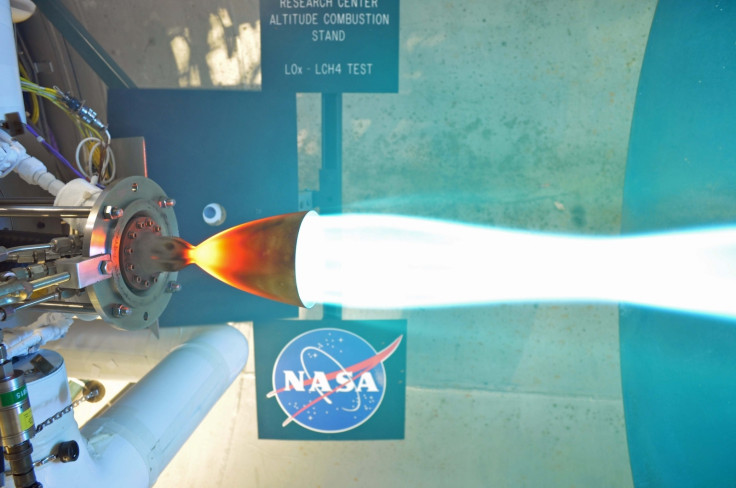Nasa test-fires 3D printed rocket engine part
The printer used is a hybrid mix of additive manufacturing and machining equipment.

Nasa's Marshall Space Flight Center in Huntsville, Alabama, successfully test-fired a 3D-printed prototype rocket engine igniter made by combining two different metallic alloys.
According to the space agency, this is the first time a rocket engine part has been 3D printed. It is also the first time they have combined more than one metal in the additive manufacturing process, which is a lot more difficult to do compared to working with one metal.
Nasa has undertaken extensive 3D printing research and developed technology to not only build large projects like printing out whole barracks for the army, but also work on methods to locally manufacture, or 3D print equipment for long journeys out of human waste in space.
Engineers at Marshall reportedly tested the parts by running low-pressure hot-fire cycles over 30 times to demonstrate their functionality. The prototype was then "cut up" and put under a microscope by a team from the University of Alabama in Huntsville to study what they call the "bi-metallic interface" between the two alloys.
Results showed that both metals had inter-diffused –mixed thoroughly as to resemble one, homogenous state; together they created a strong bond.
Preston Jones, director of the Engineering Directorate at Marshall, said: "It is a technological achievement to 3D print and test rocket components made with two different alloys. This process could reduce future rocket engine costs by up to a third and manufacturing time by 50%."
A unique hybrid 3D printing process was developed for the project called "automated blown powder laser deposition" which combined two materials - a copper-based alloy and iconel. This allowed the component to be "printed" as a single piece instead of having to fabricate four different parts that have to be joined together through a welding process called brazing.
Traditional manufacturing processes of similar rocket components involve a method called brazing to join multiple metals. Resulting alloys will then be used to fabricate complex parts like igniters that are made from many different parts. Brazing joins two types of metals by melting a filler metal into a joint which then creates a bi-metallic component. This process is time- and labour-intensive that translates to high cost of manufacture.

By diffusing two materials together, says Majid Babai, advanced manufacturing chief, and lead for the project in Marshall's Materials and Processes Laboratory, a bond is created internally within the metals and there is no hard transition between the two substances used. Because of this, the component is unlikely to crack under enormous stress and temperature gradients that come with space travel.
The printing machine was built by DMG MORI in Hoffman Estates, Illinois, which combined 3D printing with computer numerical-control machining.
Though the igniter tested is a relatively small part measuring only 10 inches tall and 7 inches wide, it paves the way for using the technology to print much larger components. Interiors of parts could be machined as they are manufactured and this is a feature that other printers lack. The hybrid printer can "alternate between freeform 3-D printing and machining within the part before the exterior is finished and closed off".
"We're encouraged about what this new advanced manufacturing technology could do for the Space Launch System programme in the future," said Steve Wofford, manager for the SLS liquid engines office at Marshall. "In next generation rocket engines, we aspire to create larger, more complex flight components through 3-D printing techniques."
© Copyright IBTimes 2025. All rights reserved.





















